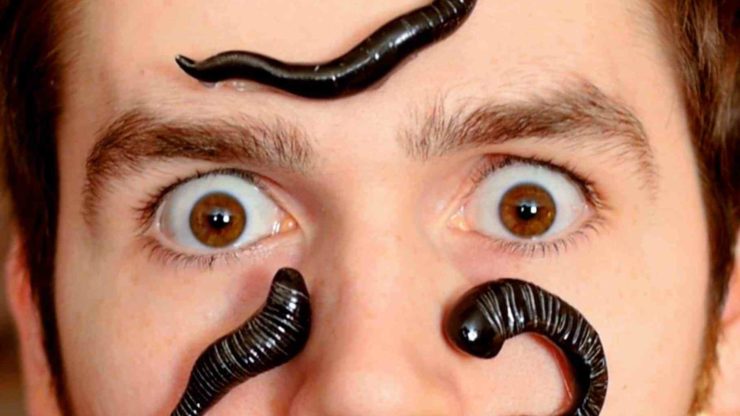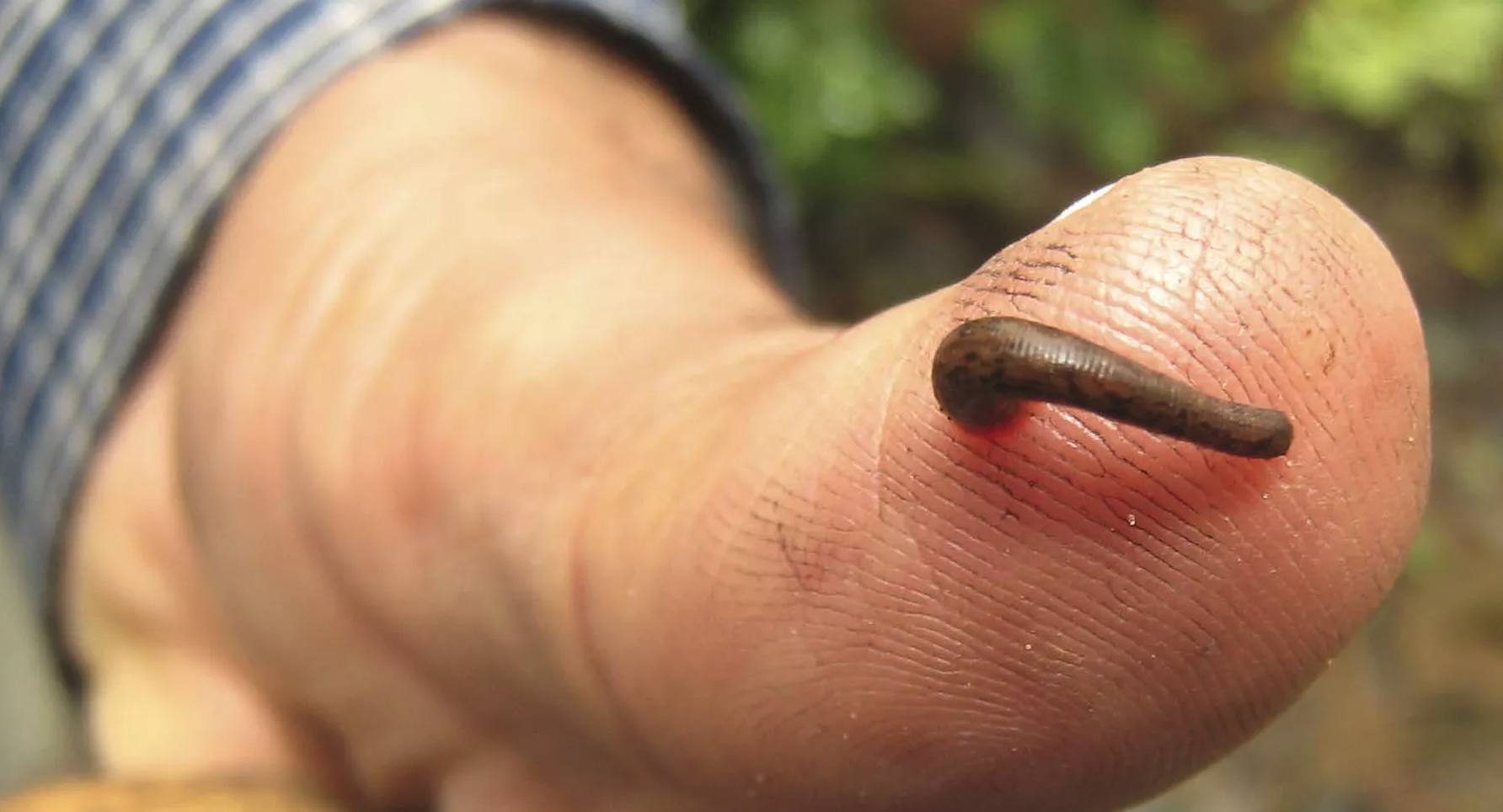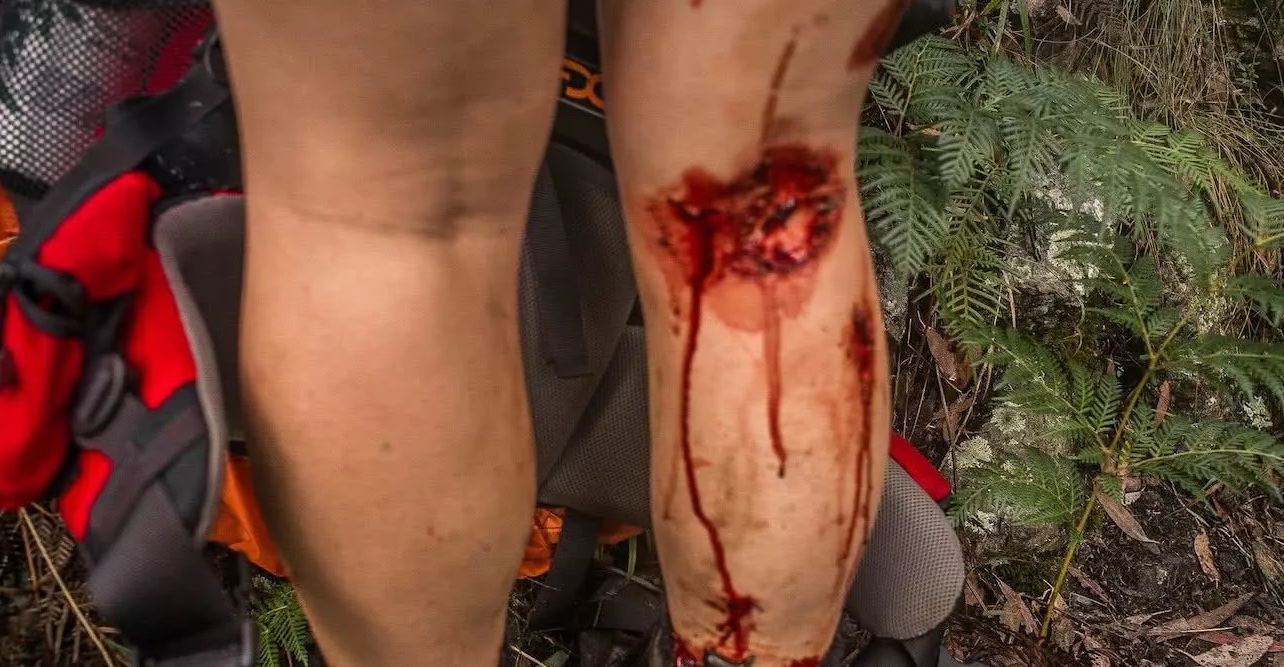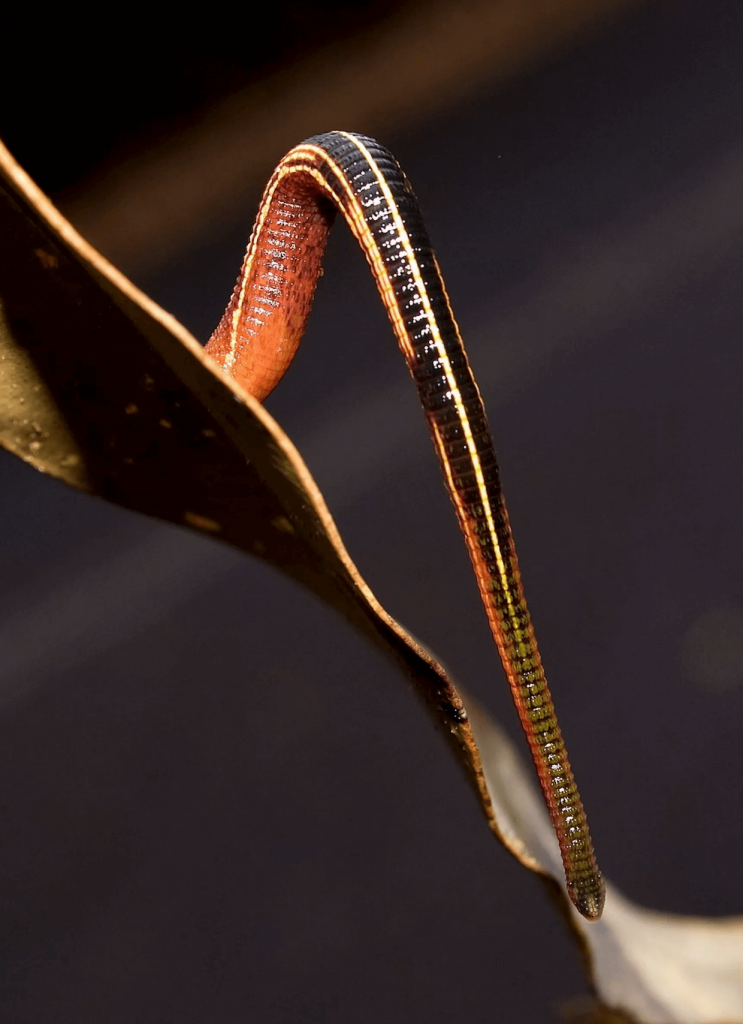If you’ve ever walked on one of our amazing Blue Mountains rainforest walks, you’ve probably encountered a leech. For some, this is a traumatic, horror film-esque experience featuring a slimy, mini vampire, and gushing blood. However, if you think about it from the leech’s perspective, it’s actually pretty smart.
What are leeches?
Leeches are related to earthworms and snails, have a jawless mouth with suckers, and can vary in size from a few millimetres to over 30 centimetres. They live in shallow freshwater habitats (such as dams or ponds) but will move into forested areas to get closer to their food source (i.e., humans). They’re also used for medicinal purposes as they contain hirudin – an anticoagulant that stops blood from clotting.
Where do they come from?
Leeches are blood-sucking, worm-like creatures that live in both saltwater and freshwater environments around Australia. They can also be found in tropical and sub-tropical areas around Europe, North America, South America and Asia. The western leech has a more limited range and is only found on mainland Australia’s eastern coast in small numbers. In some places leeches are considered endangered species due to pollution of their natural habitats – you may need to get a permit before collecting them.
How can I protect myself?
Wearing long-sleeved clothing is an excellent first step in protecting yourself from leeches. Be careful when wading through water, as a leech can attach itself to your legs and move up to your knee or higher. If you find a leech on your body, resist peeling it off and squishing it, as they’re meant to remain attached for several days.
What if I get bitten by a leech?
If you do get bitten by a leech, it will latch on and begin to suck your blood. This might not be pleasant, but it’s harmless and painless. You can rub salt or alcohol on a leech bite to make it let go; otherwise, just leave it alone until it falls off (the saliva will slow clotting). If you need help removing one that has latched onto an area you can’t reach, tweeze it out carefully.
How To Treat a Leech Wound
Leeches secrete hirudin to stop blood from clotting, so the wound may bleed for a few hours or even a few days. Like any wound, it’s good to keep it clean and apply disinfectant. Generally, they’ll leave a small red mark which will be gone in a few days.
Do leeches spread diseases?
While they may bleed for a while, and possibly itch, leech bites are more annoying than dangerous. They’re essentially harmless, making them preferable to mosquitoes, ticks, and most other bitey creepy crawlies.
Some leeches carry viruses, bacteria, and parasites, but don’t stress, it’s very rare for these to be transmitted to humans.
However, it’s worth noting that a small percentage of people have an allergic reaction to leech bites.
MORE info: https://weareexplorers.co/how-to-avoid-remove-leeches
Even MORE info: https://australian.museum/learn/animals/worms/leeches





